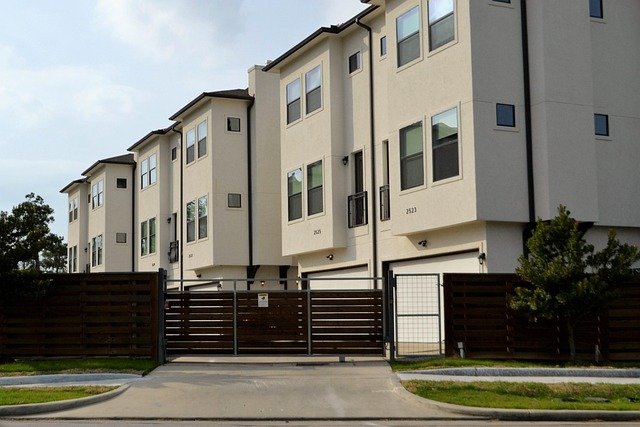How to Explore Affordable Apartment Rental Options Without Compromising Comfort
Finding a comfortable apartment that doesn’t strain the budget can feel overwhelming, especially with rapid shifts in availability and pricing. This guide explores how individuals balance space, convenience, and cost by considering strategies like widening search areas, researching emerging neighborhoods, and using digital tools to evaluate listings more efficiently. Learn how lease terms, property reviews, and prioritizing key amenities can make a significant difference in both short- and long-term affordability.

Finding Affordable Apartments in Your Area
The search for affordable housing often begins with understanding your local rental market. Rental prices vary significantly based on location, with downtown areas typically commanding higher rents than suburbs or less central neighborhoods. To find budget-friendly options in your area, utilize specialized apartment search websites that offer filters for price ranges and amenities. Many platforms allow you to set price alerts for apartments within your budget. Additionally, consider looking beyond traditional apartment buildings to duplexes, converted homes, or basement apartments, which often come with lower price tags while offering comparable living space.
Navigating Low Income Housing Options
Low-income housing programs provide vital support for individuals and families struggling to afford market-rate rentals. The Housing Choice Voucher Program (Section 8) subsidizes rent for qualified applicants, allowing them to pay approximately 30% of their income toward housing costs. Public housing units, managed by local housing authorities, offer another pathway to affordable living. Beyond government programs, nonprofit organizations frequently develop and manage income-restricted properties with below-market rents. To access these resources, contact your local housing authority to determine eligibility requirements and application procedures, as waiting lists can be substantial in many areas.
Securing Apartments When Dealing With Bad Credit
Renting with bad credit presents unique challenges but isn’t impossible. Landlords typically check credit scores to assess financial responsibility, but alternative approaches can help overcome this hurdle. Consider offering a larger security deposit to provide landlords with additional financial security. Finding a qualified co-signer with strong credit can also strengthen your application. Be proactive by explaining credit issues in a cover letter attached to your rental application, especially if past problems resulted from one-time situations like medical emergencies. Some property management companies specialize in second-chance housing for those rebuilding their credit, making these worth investigating.
Understanding Short Term Lease Apartments
Short-term lease apartments offer flexibility for those not ready to commit to standard year-long contracts. These arrangements typically range from three to six months, though month-to-month options also exist. While convenient, short-term rentals usually come with price premiums of 10-20% above standard lease rates. To find these accommodations, explore corporate housing companies, extended-stay hotels with residential options, or specialized short-term rental websites. When considering these options, pay careful attention to lease terms regarding renewal options, notice periods, and potential rent increases after the initial term expires.
Balancing Affordability With Essential Amenities
Finding affordable housing doesn’t mean sacrificing all comforts. Prioritize amenities based on your lifestyle needs rather than wants. For example, in-unit laundry facilities might save money compared to using laundromats, while an on-site gym could replace a separate fitness membership. Consider locations near public transportation to potentially eliminate car expenses. Older buildings often offer larger floor plans at lower prices compared to new construction, though they may have dated aesthetics. During apartment viewings, assess essential factors like water pressure, noise levels, cell reception, and heating/cooling effectiveness—elements that significantly impact daily comfort regardless of price point.
Apartment Rental Cost Comparison by Location Type
| Location Type | Average Monthly Rent (1BR) | Typical Utilities Cost | Common Amenities |
|---|---|---|---|
| Urban Center | $1,400-$2,200 | $150-$200 | Doorman, fitness center, rooftop access |
| Near Urban Center | $1,100-$1,700 | $130-$180 | Limited amenities, possibly laundry |
| Suburban Area | $900-$1,400 | $120-$170 | Parking, pool, on-site laundry |
| Rural Area | $700-$1,000 | $100-$150 | Parking, larger units, fewer amenities |
| Income-Restricted | $600-$900 | Varies (some included) | Basic amenities, community spaces |
Prices, rates, or cost estimates mentioned in this article are based on the latest available information but may change over time. Independent research is advised before making financial decisions.
Strategic Tips for Budget-Friendly Apartment Hunting
Timing can significantly impact rental prices, with winter months generally offering better deals due to decreased demand. Being flexible about move-in dates may allow you to negotiate favorable terms with landlords eager to fill vacancies. Consider properties managed by individual owners rather than large management companies, as they often have more flexibility with pricing and requirements. Building relationships with property managers can provide insider information about upcoming vacancies before they’re widely advertised. Finally, don’t overlook the value of neighborhood exploration—areas undergoing revitalization often offer affordable options before becoming popular and experiencing price increases.
Finding affordable apartment rentals without compromising on comfort requires research, flexibility, and knowledge of available resources. By understanding local market conditions, exploring various housing assistance programs, preparing strategies for credit challenges, and weighing the true costs of amenities against your needs, you can secure housing that meets both your budget constraints and lifestyle requirements. Remember that affordability extends beyond the monthly rent—consider transportation costs, utility expenses, and proximity to employment opportunities when evaluating the true cost of any apartment option.




